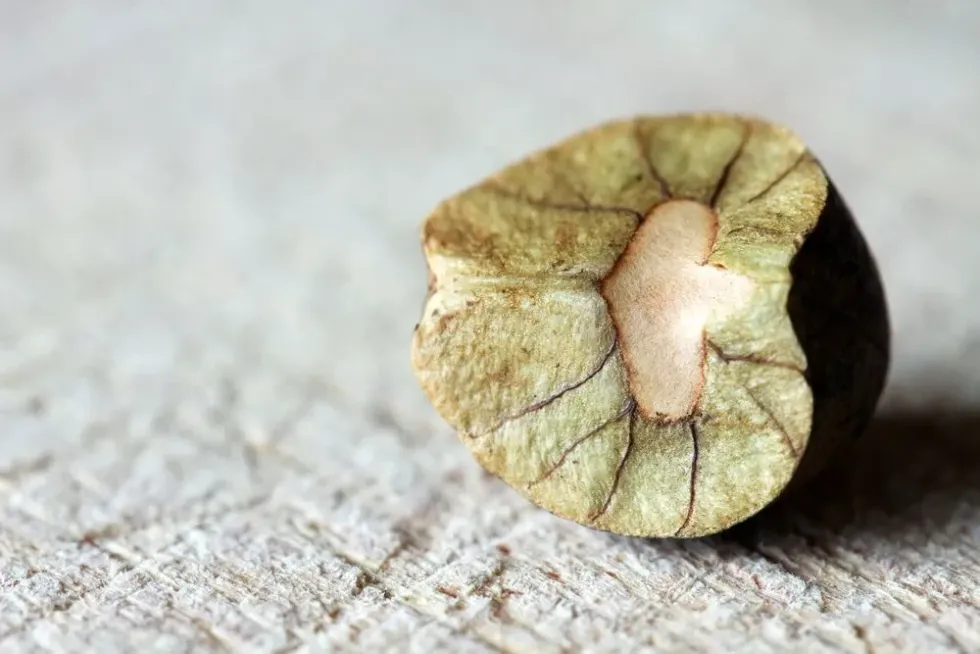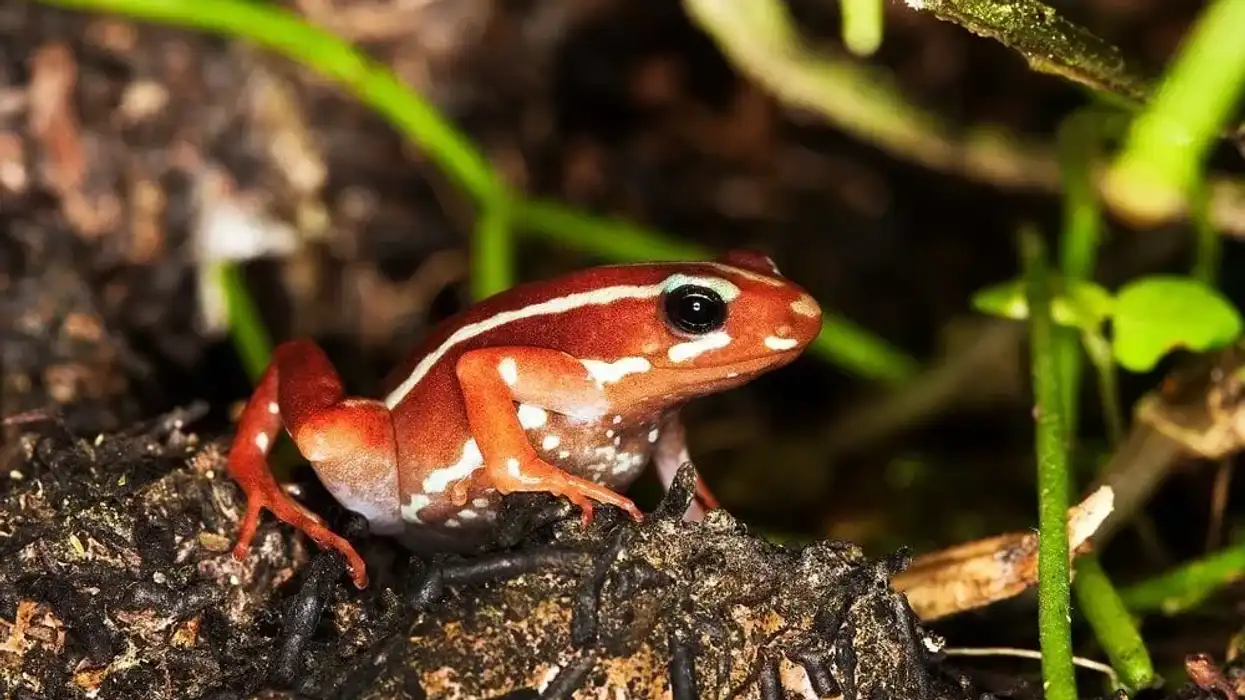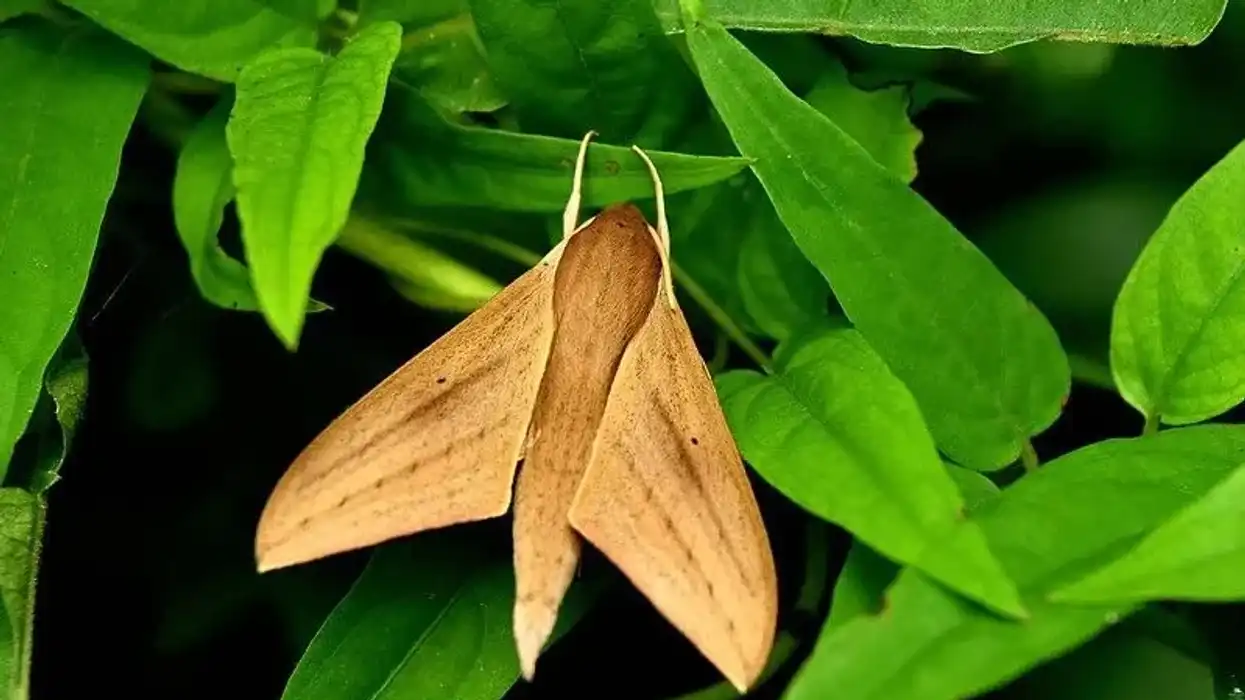Jumping Bean Moths are widely known for their larvae which inhabit the insides of the Sebastiana Pavoniana tree's fruit, also known as Mexican Jumping Beans. They are known for bouncing, or 'jumping' in warmer climates.
The female moth lays eggs on the flowers of the shrub. They hatch and the moth larva makes its way into the capsule of the fruit while it grows.
The larva eats the seeds and makes an exit hole in them. A hole is also made in the shell wall, from where the adult larva gets out if it ever crosses the pupal stage to become a moth.
Most larvae die inside the fruit, but some make it out, only to mate with the opposite sex and start the breeding process all over again.
The way the pod bounce is interesting. When they become ripe, the pods usually fall on the ground and will disintegrate and turn into three Mexican jumping beans.
Under the influence of heat, the Jumping Bean Moth larva inside curls and uncurls, colliding with the walls of the capsules and causing the bean to 'jump'. If an adult moth makes it out, it only lives for a few days.
Here at Kidadl, we have carefully created many interesting family-friendly animal facts for everyone to discover! Learn more about some other insects including the gypsy moth facts or the leaf-footed bug facts here.
Jumping Bean Moth Interesting Facts
What type of animal is a Jumping Bean Moth?
The Jumping Bean Moth is a moth.
What class of animal does a Jumping Bean Moth belong to?
A Jumping Bean Moth belongs to the arthropod (Insecta) class of animals.
How many Jumping Bean Moths are there in the world?
The Jumping Bean Moth population of the world is unclear.
Where does a Jumping Bean Moth live?
A Jumping Bean Moth lives in the desert.
What is a Jumping Bean Moth's habitat?
Jumping Bean Moths before hatching, live in the seeds of the Sebastiana Pavoniana, known as the Mexican Jumping Bean. After an adult moth emerges, it lives in the desert, since that is where Mexican Jumping Bean trees are found. It is found in the northern states of Sonora and Sinaloa
Who do Jumping Bean Moths live with?
Jumping Bean Moths (Cydia saltitans) live alone inside the Sebastiana Pavoniana tree's bean, known as the Mexican Jumping Bean.
How long does a Jumping Bean Moth live?
Jumping Bean Moths may live in tiny larvae from, from few weeks to several months inside the Mexican Jumping Bean or Sebastiana Pavoniana seeds. The adult moth lives only for a few days outside the Mexican Jumping Bean.
How do they reproduce?
The Jumping Bean Moths reproduce by mating and laying eggs. The moth lays an egg on the flowering shrub of a Mexican jumping bean's seedpods.
When the eggs hatch into larvae, they force their way into the pods and eat the seeds. The movement of this moth larva makes the beans jump after they fall to the ground.
After the pod becomes ripe, the adult moth climbs out through an exit hole that it had made and shored up with silk. This adult moth repeats this cycle and dies within a few days.
What is their conservation status?
The Conservation Status of the Jumping Bean Moth is 'Not determined'
Jumping Bean Moth Fun Facts
What do Jumping Bean Moths look like?

Jumping Bean Moths exist in two important stages. They are recognizable because of their larvae stage when they 'jump' around. During this stage, they are whitish, and they have brown heads.
After passing the larva and pupa stage, it develops into a moth. A Jumping Bean's forewings can be considered to be gray or light gray. The outer edges of the forewings have black dots and dashes. Black markings are also seen on the forewings.
There is also a white dot on the apex beneath a couple of dark markings. Its hindwings are brow-colored. Their bodies also appear to have shades of silver and gray.
How cute are they?
They are extremely cute animals. When cared for properly and in the presence of mild heat, the immature larvae of these moths curl and uncurl inside the Mexican Jumping Beans, which is a very entertaining sight to watch. The larvae mature into pupal, adult moths which are beautifully monotonous in color.
How do they communicate?
Jumping Bean Moths (Cydia saltitans) derive their name because their larvae jump when living inside a Mexican Jumping Bean. They live alone inside these fruits for months and when they curl and uncurl, the bean 'jumps'. After maturing into moths, they live to only lay eggs again.
How big is a Jumping Bean Moth?
The Jumping Bean Moth is about 1-2 in (2.5-5 cm), which makes it 11 times smaller than the Atlas Moth.
How fast can Jumping Bean Moths fly?
It is unclear how fast the moths of Jumping Beans can fly, but typical moths are known to have speeds of around 33 mph (54 kph) when flying with the wind.
How much does a Jumping Bean Moth weigh?
A Jumping Bean Moth weighs around 0.003 oz (0.08 g).
What are the male and female names of the species?
The males and females of the species do not have specific names.
What would you call a baby Jumping Bean Moth?
A young Jumping Bean Moth may be called a larva and later on, a pupa before it matures into the moth.
What do they eat?
The larva of the Jumping Bean Moth eats the seeds of the capsule of the Mexcian Jumping Bean fruit. Before they mature into pupal moths, they gnaw at the shell of the bean fruit.
Are they dangerous?
They are not dangerous at all.
Would they make a good pet?
They make terrific and entertaining pets when in the larva stage. They make the beans jump when under the influence of heat. All the upkeep they need is the provision of a dark and cool place, and a mist spray once a week.
Did you know...
A close relative of the Jumping Bean Moth from Mexico is the Arizona Jumping Bean. Sebastiana bilocularis are the plants that grow on rocky slopes of the Arizona desert that harbor these beans (or fruits) that jump.
The Jumping Bean Moth Range also includes, apart from its native Mexico deserts, the states of Sonora, and Baja California, as well as the Gulf of California.
The Jumping Bean Moth life cycle often goes incomplete, as the immature larvae do not make it out of the fruit as adult moths most times.
The Jumping Bean Moth species belong to the family Tortricidae.
The Sebastiana pavoniana plant has green leaves which become red in the winter. Just like the moth, the Sebastiana pavoniana shrub is also native to Mexico.
A good idea when you have Jumping Bean Moths (larvae) in their beans as pets, is to carry them around in your pocket. They may feel the warmth, and start jumping!
How to take care of a Jumping Bean Moth?
It is very easy to care for a Jumping Bean Moth. All the upkeep they need is the provision of a dark and cool place, and a mist spray once a week. When they mature into adults, they should be allowed to fly away.
Are Mexican jumping beans illegal in the US?
No, Mexican Jumping Beans are not illegal in the US. The Mexican Jumping Bean is listed as non-toxic by the Poison Control Center. They are completely harmless. The import of Jumping Beans is also approved by the US Dept. of Agriculture, stating that no danger is posed to plant life, goods, or humans by them.
Here at Kidadl, we have carefully created lots of interesting family-friendly animal facts for everyone to discover! For more relatable content, check out these five-spotted hawk moth facts, or plume moth facts for kids.
You can even occupy yourself at home by drawing one on our Jumping bean moth coloring pages.










